Potensic Elfin drone review: great aerial abilities but a bog-standard camera
On paper, the Elfin has what it takes to challenge to leading toy drone, but how does it fare in testing though? We put it through its paces
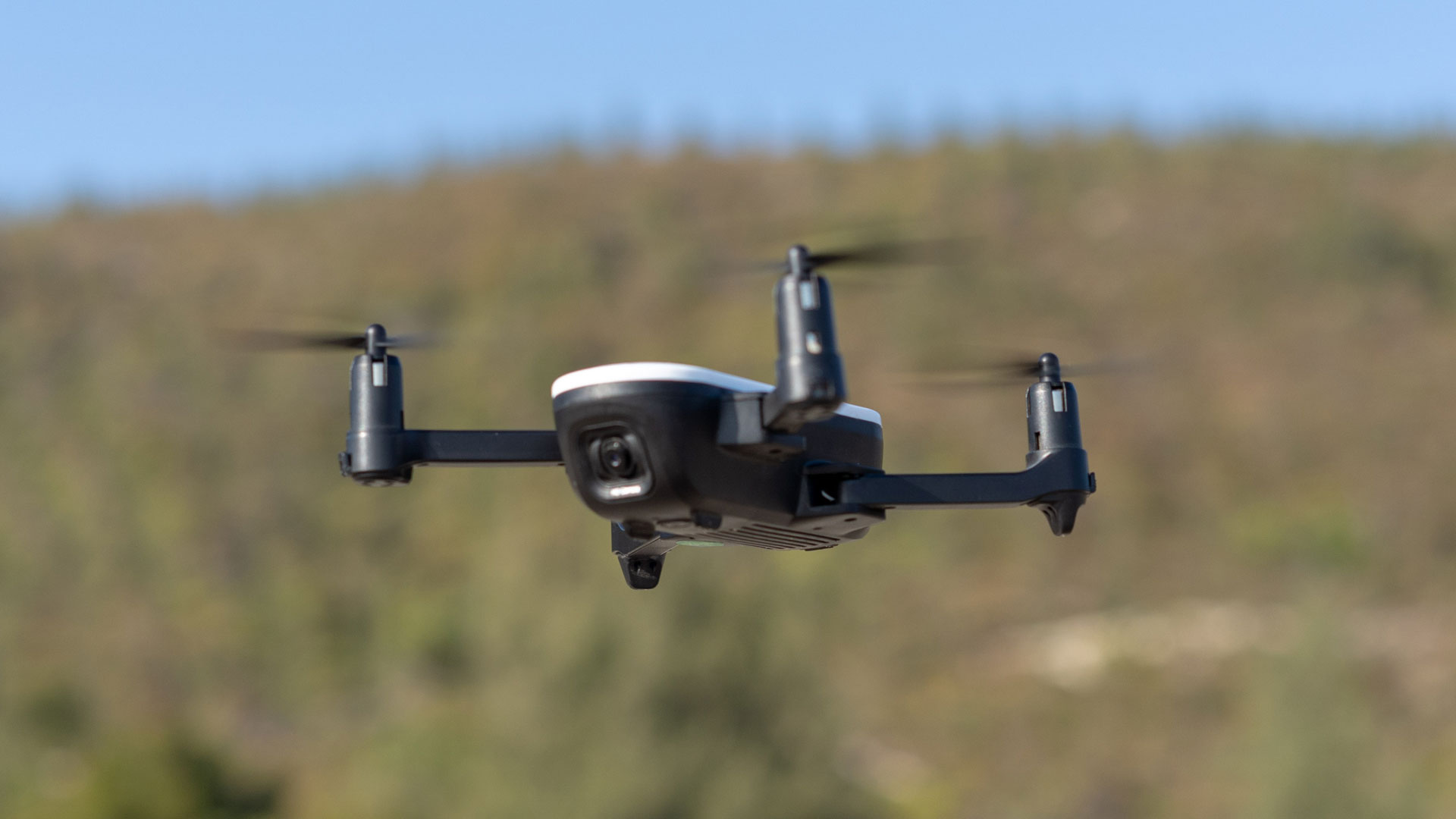
The Potensic Elfin drone is a decent flier in zero wind but is let down by a very average camera. If you’re looking for a well put together starter drone that’s a cut above much of the competition though, it's well worth considering.
-
+
Hovers well and easy to control
-
+
Decent battery life
-
+
Price includes controller and case
-
-
Video resolution is not 2K
-
-
Shaky video when the drone is moving
-
-
Subtle textures look pixelated
-
-
Unflyable in any kind of wind
Why you can trust T3
The Potensic Elfin is this brand's most advanced toy drone, but how does it match up against today's best cheap drones? I put it through its paces to find out.
While DJI dominates most of T3's best drone rankings, Potensic does still get a notable look-in. The brand makes a wide range of drones, ranging from the tiny A20 Mini Drone (and its camera-equipped sibling the A20W) to GPS-enabled, gimbal-stabilised, 4K camera-equipped drones like the Dreamer Pro. The Elfin is a camera drone that's aimed at those new to the world of drone flying, but is it better than the excellent Ryze Tello, which comes in at a similar price? Read on for my full Potensic Elfin review – or head to this Ryze Tello vs Potensic Elfin drones face-off to for a direct comparison.
Before I get into the review, I'd had better point out that in the UK at least, owners of camera equipped drones of any weight (including toy drones) are now required to buy an Operator ID. This costs £9, is valid for a year and only available to over 18-year-olds. Anyone wishing to fly your drone will need a Flyer ID, which is free and lasts for five years, but you have to take a multiple-choice test. See this UK drone regulations explainer or head to the Civil Aviation Authority website for more information and to obtain an ID. In the States, the rules are different – this US drone rules guide will fill you in on that front.
- Need something simpler? These are the best kids drones to buy now
- Browse the best beginner drones
Potensic Elfin drone review: DESIGN AND SETUP
Potensic Elfin drone specs
Video: 720P
Stills: 2MP
Video stabilisation: No
App support: Yes
VR compatible: No
Flight time: 10 minutes
Flight distance: 50m
Weight: 95g (inc. battery)
Number of batteries: 2
Controller included: Yes
With its white topped body and black propeller arms the Potensic Elfin looks fairly similar to the Tello. At L200 x W190 x D40mm the Elfin is a touch bigger though, and rather than having fixed arms like its rival, the Elfin’s arms can be neatly folded into the body of the drone. The Elfin’s build quality is good and the folded drone and controller can be easily stowed away in the protective storage case I was pleased to see included in the package.
Connecting to the controller is simple – just move the left joystick up, then down to sync, press the level calibration button and away you go. Though you’ll also need to connect via wi-fi to the Potensic Toy phone app in order to see what’s in shot as well as recording and storing stills and video on your mobile device. The app gives you additional in-flight functions and the option of activating on-screen controls, should you want to fly the drone just using your phone.
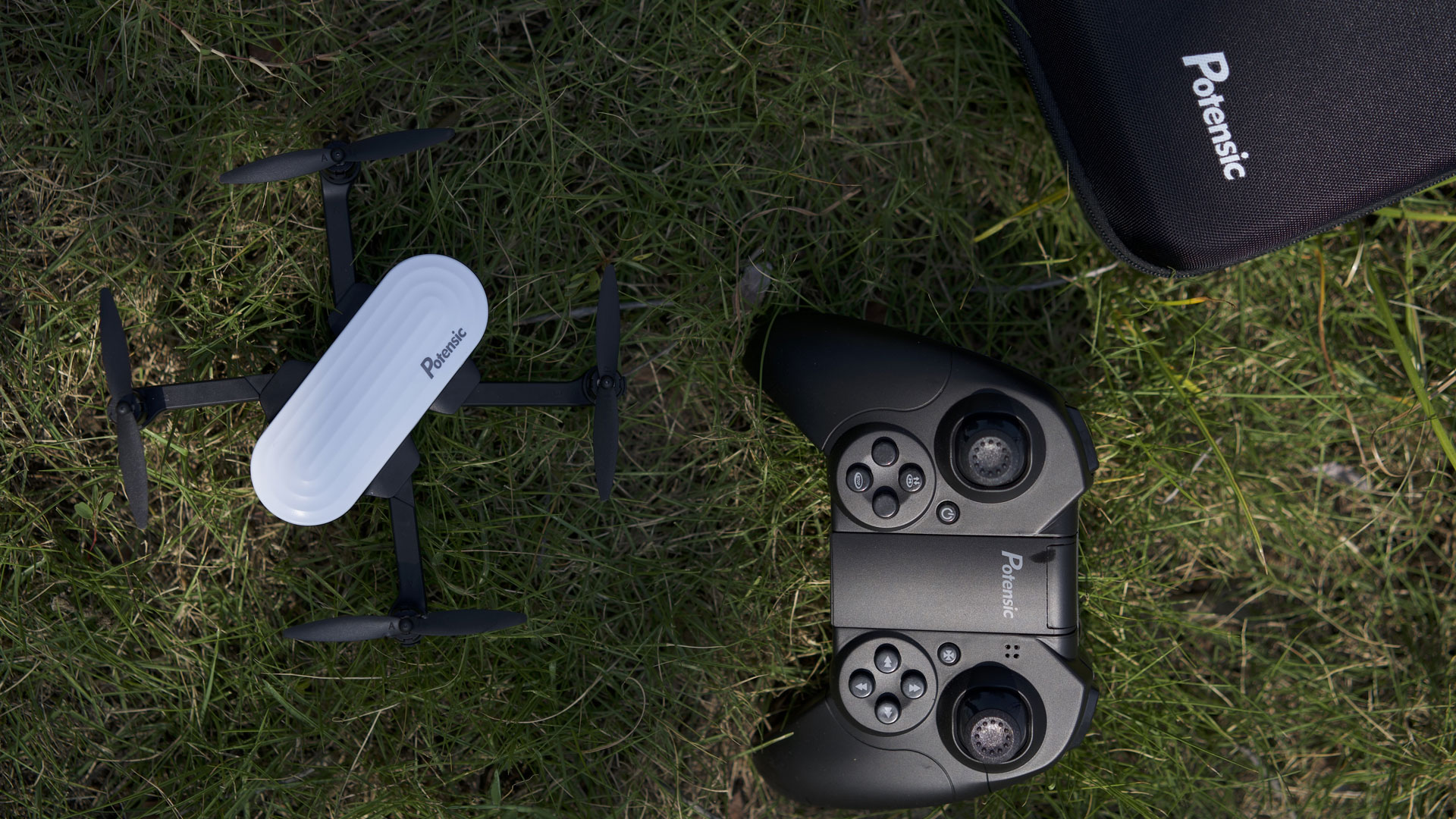
Potensic Elfin drone review:MANOEUVRABILITY AND FLIGHT MODES
Indoors, or outdoors on windless days, the Elfin does a decent job of maintaining a fixed position when hovering, though it can get slightly buffeted around when in corners or other tight spaces when the air from the downforce of its rotor blades is forced off walls and other surfaces.
While more expensive drones use GPS to maintain their position, on the underside of the Elfin is a tiny ‘Optical Flow’ camera which reads the surface below and enables the drone to hold a steady hover. While this technology is effective above most flat environments, it struggles over reflective surfaces such as water, in low light and over patterned surfaces. When the Optical Flow camera encounter a difficult to read surface, the drone then instead relies on its internal altimeter which is not quite as effective at keeping it stable.
Like all sub-250g drones in the toy category, the Elfin is very susceptible to even the lightest of breezes and struggles to respond to the pilot’s controls in any kind of wind. Should the Elfin be blown beyond its maximum flight range of 50m though, the drone will attempt to land itself automatically.
The Elfin is rapid, responsive and highly manoeuvrable flier – particularly when in the fastest of its three propeller speeds, when it zips around and changes direction impressively. In additional to conventional flying, you can also control the drone in ‘headless’ mode which makes the drone align itself with the pilot’s position, no matter which way it is facing, and responds to control inputs accordingly. You can also plot a course on your phone’s touchscreen for the Elfin to follow, it will take a photo when you throw up a peace sign with your hand or start video recording when you wave at its camera.
Potensic Elfin drone review: STILLS AND VIDEO
Despite the Elfin being described at having a 2K camera, with a video resolution of 1280 x 720 pixels, footage from the drone is not quite even 1K. While any video you shoot looks ok when viewing on your phone, run it on a device with a bigger screen and the low resolution is plain to see.
While these resolutions are fairly typical for toy drones of this price, unlike the Tello which has excellent software stabilisation, the Elfin is not equipped with any similar features of its own. As a result, footage shot while moving looks very shaky by comparison. Fortunately, you get far better video results when hovering, as the Elfin’s maintains its vertical position pretty well.
Another issue which the Elfin displays, and is typical of this kind of drone, is that it drops video frames when it gets near the end of its maximum range. This is mostly likely due to the wi-fi connect between the drone and the phone being used to record the footage.
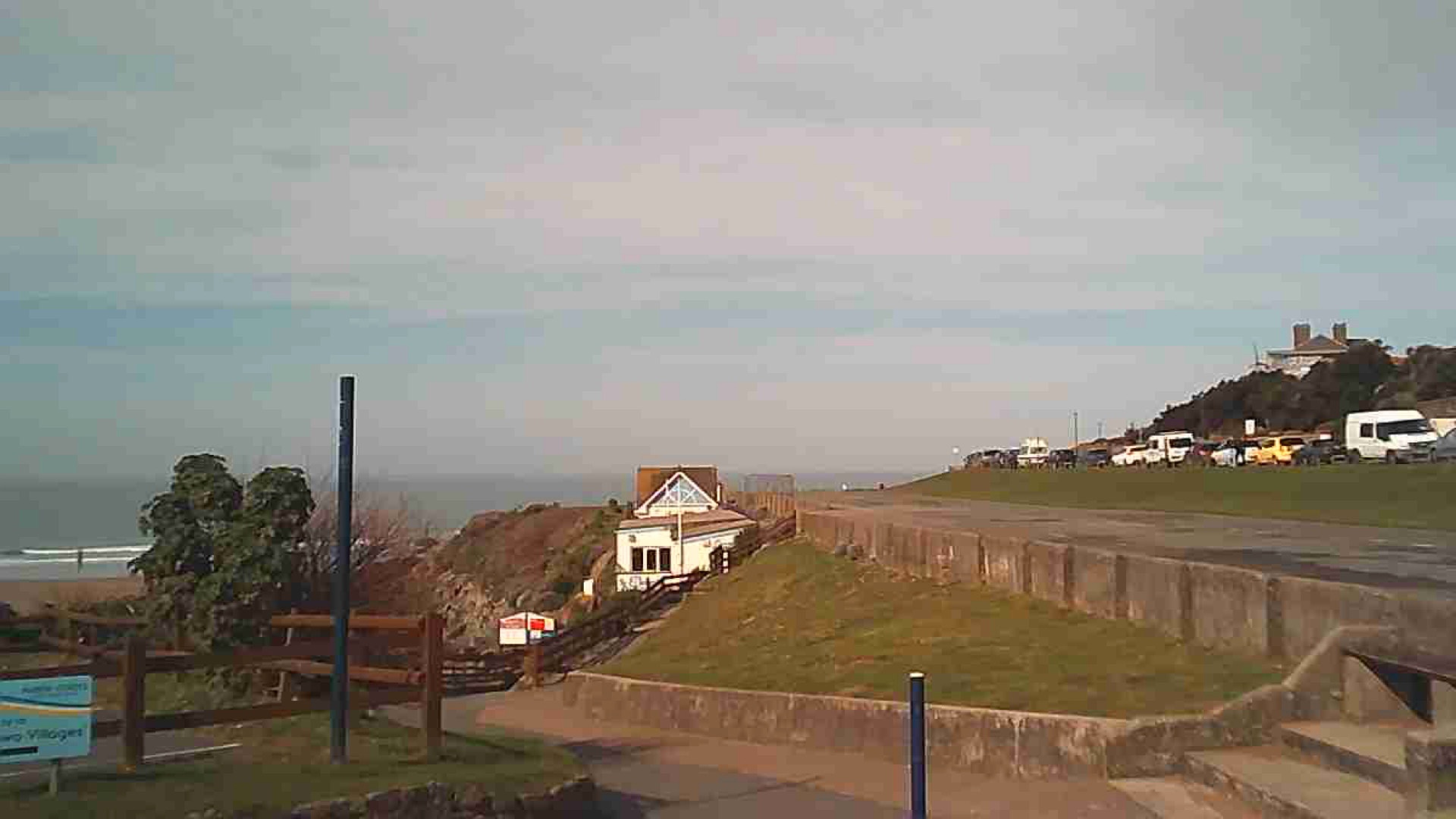
An example of a still taken using the Potensic Elfin drone
When it comes to stills, despite a genuine 2K resolution (2048 x 1080 pixels), the Elfin’s photos aren’t much better than its video. Even in decent light, images are flat, lack vibrance and have muted colours. The camera particularly struggles with subtle textures, such as clouds, which can look extremely grainy.
POTENSIC ELFIN REVIEW: VERDICT
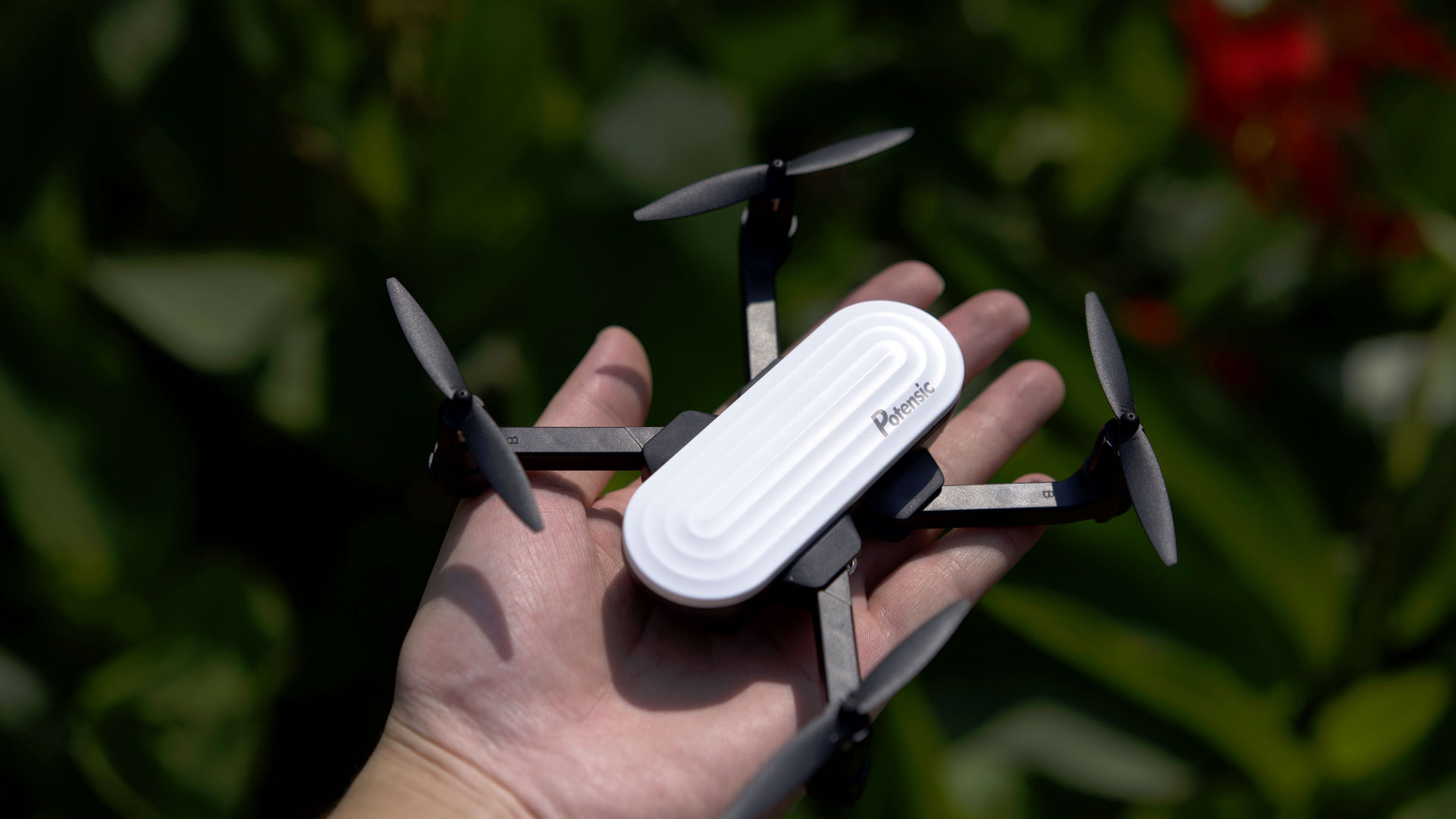
The Potensic Elfin is a well-made and robust little drone that’s easy to fly in completely still conditions and has a decent hovering ability. But like all drones at this price, it’s impossible to fly it outside in any kind of wind. Whether taking photos or video, camera resolutions are low so don’t expect great results, particularly when shooting moving footage. But once again, this is fairly typical of this kind of drone – the Ryze Tello being the only exception with its in-built video stabilisation software. The Elfin has a decent go at unseating the Tello from its position as best toy drone, but ultimately it falls short of its rival.
First reviewed September 2021
Sign up to the T3 newsletter for smarter living straight to your inbox
Get all the latest news, reviews, deals and buying guides on gorgeous tech, home and active products from the T3 experts
Rich Owen has been frantically riding mountain bikes since the early 90s and is a former editor of What Mountain Bike magazine. He’s also a surfer with over 20 years’ experience and lives near North Devon’s best beach breaks.
-
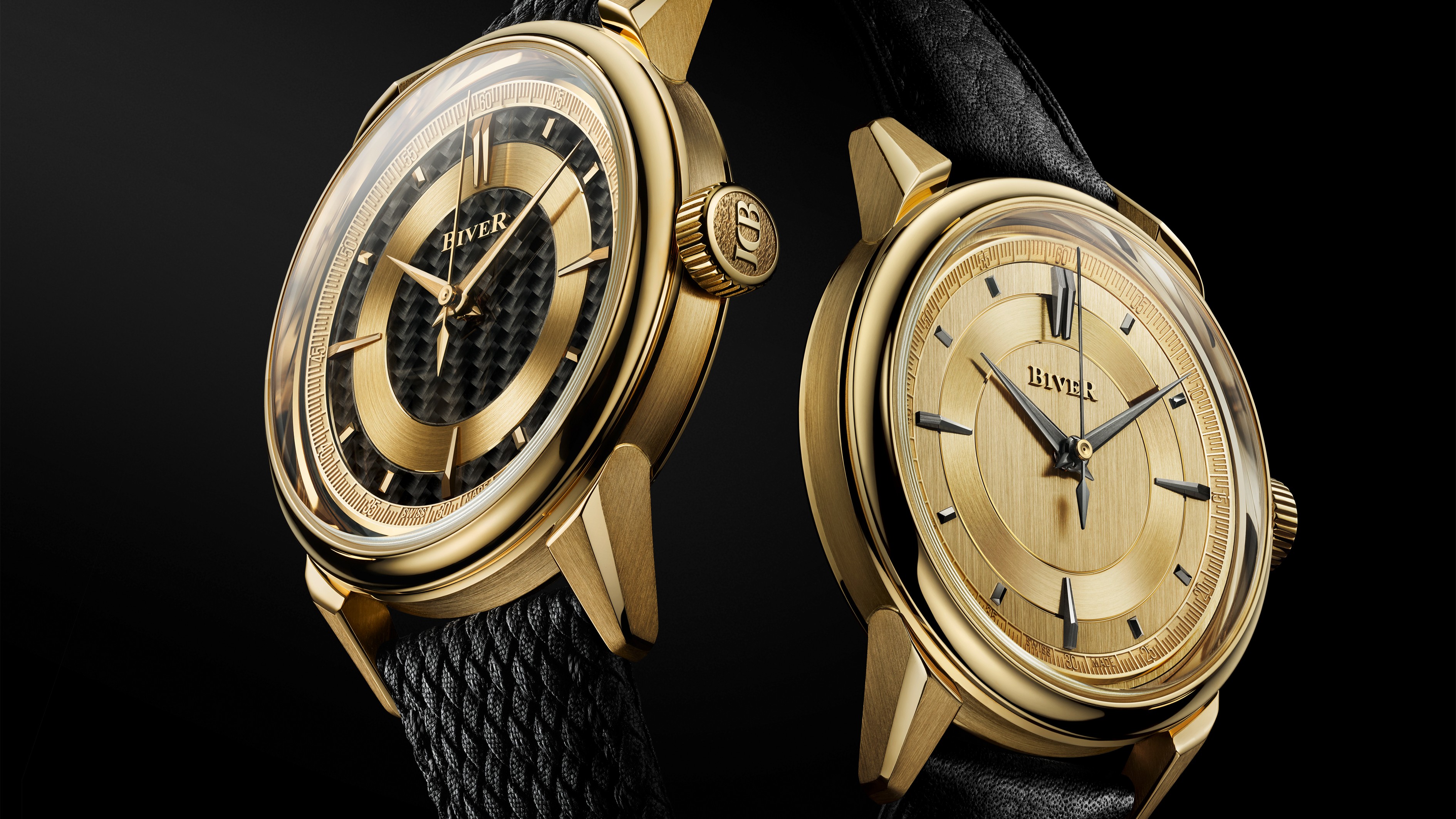 Biver adds another two Automatique models to its collection
Biver adds another two Automatique models to its collectionThese are classy additions
By Sam Cross Published
-
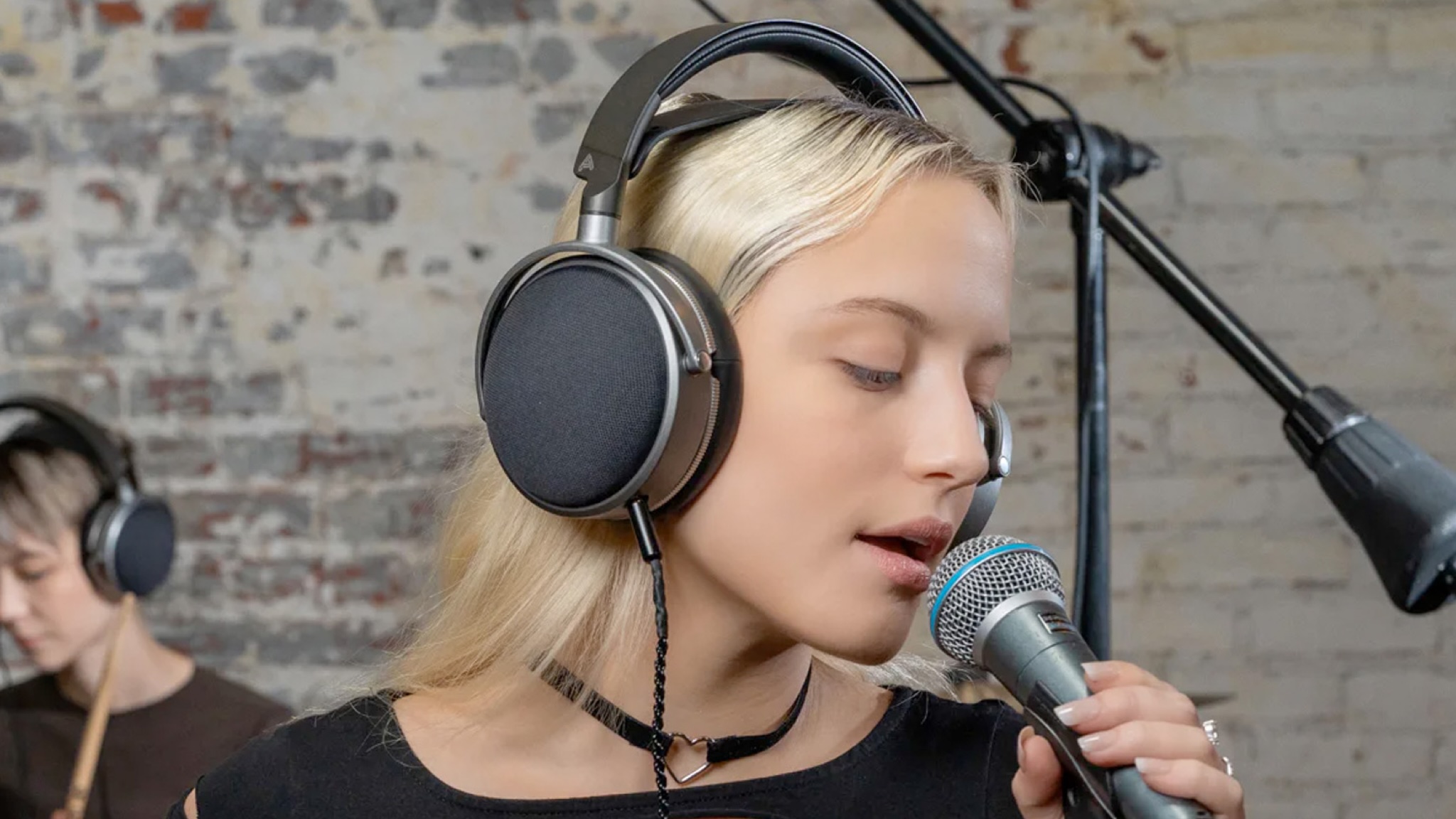 Audeze’s new planar headphones promise studio-quality sound without a sky-high price
Audeze’s new planar headphones promise studio-quality sound without a sky-high priceThe new LCD-S20 closed-back headphones are Audeze's most affordable premium planar headphones yet
By Carrie Marshall Published
-
 Shark launches its smallest NeverChange Air Purifier yet – but it’s still just as powerful
Shark launches its smallest NeverChange Air Purifier yet – but it’s still just as powerfulShark reinvents its NeverChange Air Purifier in a new compact size
By Bethan Girdler-Maslen Published
